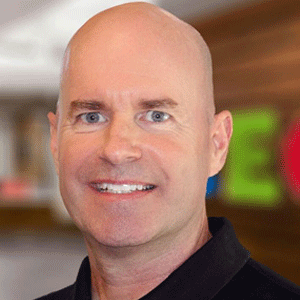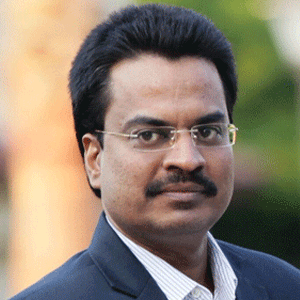THANK YOU FOR SUBSCRIBING

Eric Gordon, SVP & CIO, CEC Entertainment
CEC Entertainment, known for the iconic Chuck E Cheese’s restaurant and family entertainment chain, is nearly completed with a transition away from legacy, mainframe-based business solutions and processes to a more nimble, flexible cloud-based solutions portfolio. The business was recently acquired by Apollo, LLC, which set out to restore a culture of great guest service, sales and growth. Suffering from underinvestment in information technology and burdened by inhibiting legacy solutions, CEC embarked on a transformation of its business processes and enabling technologies with the goal of creating capabilities to better serve all locations and guests.
Adapting to the new world and learning to live with a Software as a Service (SaaS) and cloud-based solutions portfolio has been as challenging as implementing the technology. What began as a replacement of legacy HR and finance applications with Workday HR, benefits, payroll and financials has evolved to include new cloud-based store solutions, a new phone system, a corporate office move and new data center. All these investments are aligned to improve service for the company’s 525 locations and millions of guests.
To ensure a successful IT portfolio transition and create a thriving company environment, CEC is adopting four guiding principles.
1. Change focus on security
2. Limit platforms and vendors
3. Simplify and adapt business processes
4. Improve architecture and quality assurance
Together, these principles guide the formation of new processes and the skills and behaviors of the IT organization. The objective of this piece is to describe how the guiding principles are used to shape behaviors and share some lessons learned from the process.
A major benefit of cloud-based solutions is accessibility. Associates can now access HR, payroll, and financial information from their mobile devices or web browser, offering increased convenience for the end-user. It also improves business continuity planning in that critical infrastructure and is now running in Tier-3 vendor data centers, with remote access to key systems in the event of the loss of a corporate workspace. However, that convenience increases the number of end points vulnerable to acompromise or data breach. An ID compromise
One key to an efficient IT cost structure is to keep the solutions portfolio as simple as possible. More IT complexity requires more management, which translates to higher support costs. Many companies are suffering the hangover of “best of breed” applications strategies and overly complex portfolios, molded to fit unique business requirements. Increased vendor solution components also result in large numbers of complex integrations. Many of those decisions are backed by good business cases, but ignore the IT support impact. Companies can address this by limiting vendors and adopting “platform” solutions from vendors that offer a broad range of functionality. This approach limits the complexity of the portfolio and the number of vendors to manage, as each platform vendor becomes responsible for integration of their solutions. The other key benefit of hosted solutions is the simplification of the infrastructure footprint.
The long-simmering debate between “change business processes” and “modify software” is largely over. For commodity (non-differentiating) business processes, the best approach is to modify business processes to fit software capabilities. Many companies will continue to custom develop software where competitive advantage is clear and, for some companies, the outsourcing pendulum has shifted back to more internal software development roles. However, hosted SaaS solutions are very sophisticated with many configurable features and options. The result can make it seem like the software configuration was twisted to fit poor or ineffective business processes. Changing those complex configurations can be time consuming, risky and expensive. Simplifying and standardizing business processes is still required, as is managing the health of the software configuration. Turning configuration management responsibility over to end-users is not the path to more stable, cost-effective technology solutions, so having knowledgeable IT teams focused on configuration and change management is more important than ever.
An essential element to IT success in a cloud world is to strengthen architecture and quality assurance capabilities. The IT architect role has evolved over the years, but the need to understand and efficiently design processes, data and technology solutions to drive value and achieve business objectives is still the purpose of the role. The knowledge and experience of the IT architect now shifts to integration and software configuration skills. The ability to identify and explain tradeoffs between software configuration methods to meet business process needs is more important than ever, and compromise is essential.
Quality testing also becomes more important in a SaaS world. Companies must protect themselves from vendorintroduced bugs and undesired features. In the on premise world, companies frequently implemented software and were able to control when they allowed it to change. In the SaaS world, companies are at the mercy of vendor-introduced change on a vendor-defined schedule. A robust testing team and methodology is critical to ensure the stability of the operating model. Solution providers also control test environments, which helps reduce the company’s infrastructure footprint, but it introduces constraints on the test ecosystem. Interfaces and touchpoints between test environments are increasingly important to manage.
In conclusion, succeeding in a cloud-based world requires that IT leaders act as brokers of services and managers of this increasingly regulated environment, with extensive knowledge of business processes, architecture skills, security, vendor management and quality testing.
Weekly Brief
I agree We use cookies on this website to enhance your user experience. By clicking any link on this page you are giving your consent for us to set cookies. More info
Read Also
Artificial Intelligence - Myths And Truths
Sustainable Future through Innovative Technology Solutions
The Future Relies on Augmented AI
Digitalization with the use of digital technologies/Improving business through digital technologies
How Marco's Pizza Leaned On Technology To Succeed Amid The Pandemic By Quickly Pivoting To Contact-Free Delivery And Curbside Carryout
Bunnings Diy Digital Transformation
For a Smarter City: Trust the Data, Ignore the Hype
Smart Community Innovation for the Post Pandemic





















